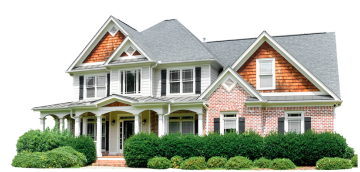A double-storey side extension is a brilliant way to enhance your living space, boost your home’s functionality, and add significant value to your property. Whether you’re accommodating a growing family or looking for a modernised home layout, a two-storey extension can be the ideal solution.
This comprehensive guide will explore the benefits, design considerations, rules, and tips for double-storey side extensions in the UK, ensuring you make informed decisions for your project.
Difference Between Double-Storey and Single-Storey Extensions
The primary distinction between single-storey and double-storey extensions lies in the additional vertical space. A single-storey extension is typically limited to ground-level rooms such as kitchens, living areas, or dining spaces. In contrast, a double-storey extension offers an upper level, allowing homeowners to add bedrooms, bathrooms, or offices, effectively doubling the usable space within the same footprint.
Advantages of Double Storey Extensions Over Single Storey:
- Increased Living Space: Two-storey extensions provide room for both living and sleeping areas.
- Better Utilisation of Land: They make efficient use of your plot without consuming extra garden or yard space.
- Higher Property Value: Adding a second storey often results in a more significant increase in your home’s market value.
While double-storey extensions demand more investment and planning, their long-term benefits often outweigh the challenges.
Adding a Double-Storey Extension to the Rear and Side of the Home
Extending your home’s rear and side with a two-storey addition is an excellent choice for those with corner plots or detached houses. This layout not only maximises floor space but also allows for diverse configurations. A rear extension is ideal for creating expansive kitchens, family rooms, or dining areas on the ground floor, while the upper level can accommodate bedrooms or office spaces.

Key Considerations:
- Natural Lighting: Incorporate skylights or large windows to brighten the extended areas.
- Integration with Existing Structure: Ensure the new construction harmonises with the original design, using similar materials and styles.
- Garden Space: Plan the extension carefully to maintain an adequate garden or outdoor area.
Adding a Double-Storey Extension for Semi-Detached Houses
For semi-detached homes, a double-storey side extension is a popular choice to enhance functionality without encroaching on shared boundaries. This type of extension can seamlessly integrate with the existing layout while providing additional rooms for growing families.
Practical Tips:
- Respect Boundaries: Maintain the required distance from neighbouring properties to adhere to UK planning laws.
- Soundproofing: Use high-quality insulation materials to minimise noise transfer between your home and your neighbour’s.
- Symmetry: Keep the extension visually balanced to preserve the home’s aesthetics and neighbourhood appeal.
What Happens Before and After for Double Storey Extension?
Before:
- Planning Permission: Depending on the size and location, you may need to obtain planning permission.
- Architectural Design: Hire an experienced architect to draft detailed plans and layouts.
- Structural Survey: Ensure the existing foundation can support the additional weight of a second storey.
- Budgeting: Develop a realistic budget that accounts for construction, materials, and unforeseen costs.
After:
- Post-Construction Cleaning: Clear debris and perform a thorough cleaning of the site.
- Interior Finishing: Complete painting, flooring, and fixture installations.
- Building Inspections: Schedule final inspections to ensure the extension meets safety and quality standards.
- Landscaping: Restore outdoor areas impacted by construction activities.
Time to take action toward your dream home with Paramountbuilt.
Design Ideas for Double-Storey Side Extensions
Double-storey side extensions provide a fantastic opportunity to transform your home, offering both practicality and aesthetic value. Here are some creative design ideas to inspire your next project:
- Seamless Architectural Blend
Match the materials, colours, and rooflines of the extension with the original structure to create a harmonious exterior. Use brickwork or cladding that mirrors the existing property, ensuring the new addition feels like a natural part of your home.
- Modern Open-Plan Living
On the ground floor, design an expansive open-plan kitchen-diner or family room, ideal for modern lifestyles. Upstairs, create flexible spaces that could function as additional bedrooms, a home office, or a playroom for children.
- Light-Filled Interiors
Maximise natural light by incorporating floor-to-ceiling windows, bi-fold doors, or even a glass roof panel. You can use skylights or roof lanterns to bring light into areas that might otherwise feel enclosed.
- A Statement Staircase
You can also design a bespoke staircase that connects the two levels of the extension in a visually striking way. Spiral staircases or minimalist designs with glass balustrades can add a touch of luxury to your home.
- Flexible Layouts
Choose a layout that adapts to your needs. A multi-functional space can serve as a guest suite with an ensuite bathroom or a private work-from-home area.
- Eco-Friendly Features
Incorporate sustainable materials like reclaimed wood or eco-friendly bricks for the construction. Add solar panels or energy-efficient windows to reduce the environmental impact and improve energy performance.
- Wraparound Elegance
Combine a side extension with a rear addition to create a wraparound design that provides a larger footprint and better flow between rooms. This is especially useful for properties with expansive gardens or corner plots.
- Lofty Heights
Add a touch of grandeur by including vaulted ceilings or double-height spaces in your design. These features enhance the sense of space and allow for striking interior design elements, like feature lighting.
- Indoor-Outdoor Connection
Use sliding or bi-fold doors to connect the indoor space with your garden seamlessly. Consider adding a patio, terrace, or decked area to extend your living space into the outdoors.
- Contrasting Contemporary Look
If blending isn’t your style, embrace contrast by designing a bold, modern extension that stands apart from the original structure. Think steel frames, polished concrete floors, and minimalist aesthetics for a truly contemporary feel.
What Are the Rules for Double Storey Side Extensions in the UK?
When planning a double-storey side extension, it is essential to comply with UK building regulations and local planning laws. Key rules include:
- Height Restrictions: The maximum height should not exceed the original property’s roof.
- Boundary Considerations: Maintain a minimum distance of 2 meters from shared boundaries.
- Permitted Development Rights: Some smaller extensions may not require planning permission under permitted development rights.
- Privacy: Avoid overlooking neighbouring properties by positioning windows thoughtfully.
- Structural Integrity: Ensure the foundation and framework meet safety standards.
Potential Challenges for Double-Storey Side Extensions
- Planning Permission:
Navigating local council requirements can be time-consuming. It’s essential to have a clear understanding of the regulations in your area.
- Budget Overruns:
Unexpected expenses, such as material shortages or design changes, can escalate costs. Building a contingency fund can help mitigate financial stress.
- Structural Issues:
Older homes may require extensive foundation reinforcement to support the new structure.
- Disruption During Construction:
Living on-site during construction can be challenging. Discuss timelines and mitigation plans with your builder.
Reliable Tips for Double-Storey Side Extensions
- Plan Ahead: Invest time in detailed planning to minimise surprises during the construction phase.
- Hire Professionals: Work with experienced architects, builders, and surveyors to ensure quality results.
- Use High-Quality Materials: Durable materials reduce maintenance costs and enhance the extension’s lifespan.
- Optimise Space: Consider multi-functional rooms and built-in storage to maximise the use of the new space.
- Consider Resale Value: Design the extension to appeal to future buyers, not just your current needs.
How Can You Find an Architect for Two-Storey Side Extensions?
Finding the right architect is crucial for the success of your project. Here’s how:
- Search Locally: Look for architects familiar with local building codes and styles.
- Check Credentials: Verify qualifications and membership in professional bodies such as RIBA.
- Review Portfolios: Evaluate past projects to ensure their style aligns with your vision.
- Seek Recommendations: Ask friends, family, or neighbours for referrals.
- Conduct Interviews: Discuss your project’s scope, budget, and timeline to gauge compatibility.
Final Thoughts
A double-storey side extension can transform your home, offering increased space, enhanced functionality, and a boost to property value. While the process requires careful planning and adherence to regulations, the rewards are well worth the effort. By following the guidelines and tips in this guide, you’re well-equipped to embark on your extension journey with confidence.
Read More:
https://paramountbuilt.co.uk/blogs/wrap-around-extension/
https://paramountbuilt.co.uk/blogs/the-ultimate-guide-for-garden-room-extension/
https://paramountbuilt.co.uk/blogs/9-different-types-of-architects/


 Describe your needs
Describe your needs
 it only takes 30 seconds
it only takes 30 seconds